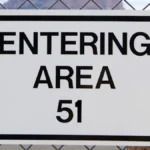
An avalanche happens when snow rapidly flows or slides down a slope; it is also known as a snowslide or a snowslip. An avalanche can be caused by loose snow, which is less destructive and lethal, or by a slab of snow that slides as a unit and engulfs and destroys almost everything in its path. The most dangerous avalanches are slab avalanches. Avalanches occur when there is a steep, snow-covered slope with a weak layer of cover and a trigger. The majority of avalanche accidents occur as a result of the victim or someone in their group initiating the avalanche.
Interesting facts about Avalanches:
Avalanche accidents kill approximately 150 people worldwide each year.
Most avalanches occur on slopes with an angle of 30 to 45 degrees because steeper slopes continuously slough off the snow, preventing snowpack buildup.
The 24 hours following a 12-inch snowfall are the most dangerous for an avalanche.
An avalanche can reach high speeds in a short period of time, reaching speeds of up to 80km/h in only 5 seconds.
Crews will trigger avalanches under safer conditions in some avalanche-prone areas to reduce the buildup on dangerous slopes.
The human body sinks quickly in avalanche debris. After the avalanche snow slide begins to slow, a buried victim should make room to breathe and punch their hand upward before the snow slide stops, as the snow immediately becomes like concrete.
A victim buried by an avalanche has a 91% chance of survival if rescued within 18 minutes.
When rescue occurs between 19 and 35 minutes after the avalanche, only 34% of victims survive.
Wounds, hypothermia, and suffocation are the most common causes of death in an avalanche. Only one in every three people who are buried by an avalanche is discovered alive.
In the United States, the worst avalanche disaster occurred in 1910. The avalanche was triggered by a train wreck, and approximately 96 people died as a result.
Avalanches can occur as a result of wind-driven snow accumulation rather than direct snowfall.
Extreme cold, heat, or wind can all deplete a snowpack.
Avalanche prevention measures are frequently implemented in areas where human life is threatened by avalanches. Traveling on a snowpack repeatedly can help to stabilize it. Small avalanches can be triggered with explosives.
Explosives can be delivered by hand, dropped by helicopter, or shot as a projectile to their intended target area.
Avalanches on the Austrian-Italian front are thought to have killed 40,000 to 80,000 soldiers during World War I.
Avalanches killed 265 people in the Alps of Germany, Italy, Switzerland, France, and Austria during the 1955-1951 winter season. The avalanches became known collectively as the “Winter of Terror.”
An avalanche killed 12 people in their chalets in Montroc, France, in 1999 after burying them in 100,000 tons of snow.









